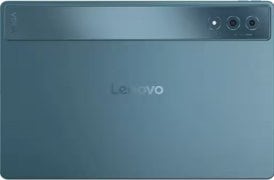- Home
- Science
- Science News
- India’s PRATUSH Computer Could Detect Signals From the Universe’s First Stars: Report
India’s PRATUSH Computer Could Detect Signals From the Universe’s First Stars: Report
RRI’s tiny PRATUSH payload could detect signals from the first stars, deployed on the Moon’s far side for the Cosmic Dawn study.

Photo Credit: NASA
A compact PRATUSH SBC payload on the Moon’s far side could detect the first starlight
A palm-sized computer developed by India's Raman Research Institute (RRI) is set to revolutionise the hunt for the universe's first stars. Named Probing ReionizATion of the Universe using Signal from Hydrogen (PRATUSH), this compact space payload, built using a credit-card-sized single-board computer (SBC), is designed to detect faint hydrogen radio signals from the “Cosmic Dawn”, when the first stars and galaxies ignited. Its small size also means it is relatively low cost and can be grounded on the far side of the moon, away from the Earth's interference, where it can make precise observations undisturbed in a radio-quiet zone. It is also said to drastically lower noise via advanced FPGA processing and work to process data efficiently.
PRATUSH System Poised to Unlock Cosmic Dawn Signals from Future Lunar Mission
According to a Times of India report, the SBC-based PRATUSH system supports one of the radiometers, the antenna, and the signal processor, which can realise the calibration and noise cancellation of the 352-hour lab-tested PRATUSH system. Its compact, low-power electronics are ideally suited for space missions.
Laboratory tests of the computer has reportedly shown encouraging results. Researchers reportedly collected 352 hours of data, and were able to bring down the noise levels to highlight that the system can detect faint signals from a period just after the Big Bang, when the universe just started forming.
Set to be commissioned for a future lunar mission, PRATUSH could provide a new aural instrument to listen to the universe's earliest whisperings.
If PRATUSH can yank these primordial signals out from the rest of the noise, scientists mention it will cast light on a fresh version of how the first stars influenced cosmic evolution — and possibly evidence of their own new physical phenomena.
Get your daily dose of tech news, reviews, and insights, in under 80 characters on Gadgets 360 Turbo. Connect with fellow tech lovers on our Forum. Follow us on X, Facebook, WhatsApp, Threads and Google News for instant updates. Catch all the action on our YouTube channel.
- Samsung Galaxy Unpacked 2025
- ChatGPT
- Redmi Note 14 Pro+
- iPhone 16
- Apple Vision Pro
- Oneplus 12
- OnePlus Nord CE 3 Lite 5G
- iPhone 13
- Xiaomi 14 Pro
- Oppo Find N3
- Tecno Spark Go (2023)
- Realme V30
- Best Phones Under 25000
- Samsung Galaxy S24 Series
- Cryptocurrency
- iQoo 12
- Samsung Galaxy S24 Ultra
- Giottus
- Samsung Galaxy Z Flip 5
- Apple 'Scary Fast'
- Housefull 5
- GoPro Hero 12 Black Review
- Invincible Season 2
- JioGlass
- HD Ready TV
- Laptop Under 50000
- Smartwatch Under 10000
- Latest Mobile Phones
- Compare Phones
- Realme P4x 5G
- OnePlus Ace 6T
- OPPO A6x 5G
- Samsung Galaxy Z TriFold
- Poco F8 Ultra
- Poco F8 Pro
- Huawei Mate 80 RS Master Edition
- Huawei Mate 80 Pro Max
- Asus ProArt P16
- MacBook Pro 14-inch (M5, 2025)
- Poco Pad M1
- Poco Pad X1
- Just Corseca Skywatch Pro
- Honor Watch X5
- Acerpure Nitro Z Series 100-inch QLED TV
- Samsung 43 Inch LED Ultra HD (4K) Smart TV (UA43UE81AFULXL)
- Asus ROG Ally
- Nintendo Switch Lite
- Haier 1.6 Ton 5 Star Inverter Split AC (HSU19G-MZAID5BN-INV)
- Haier 1.6 Ton 5 Star Inverter Split AC (HSU19G-MZAIM5BN-INV)












